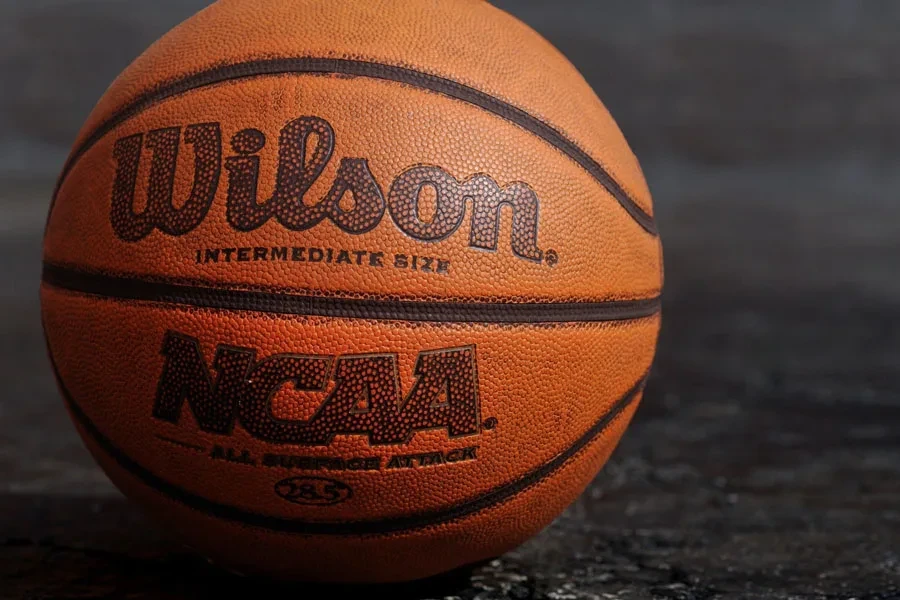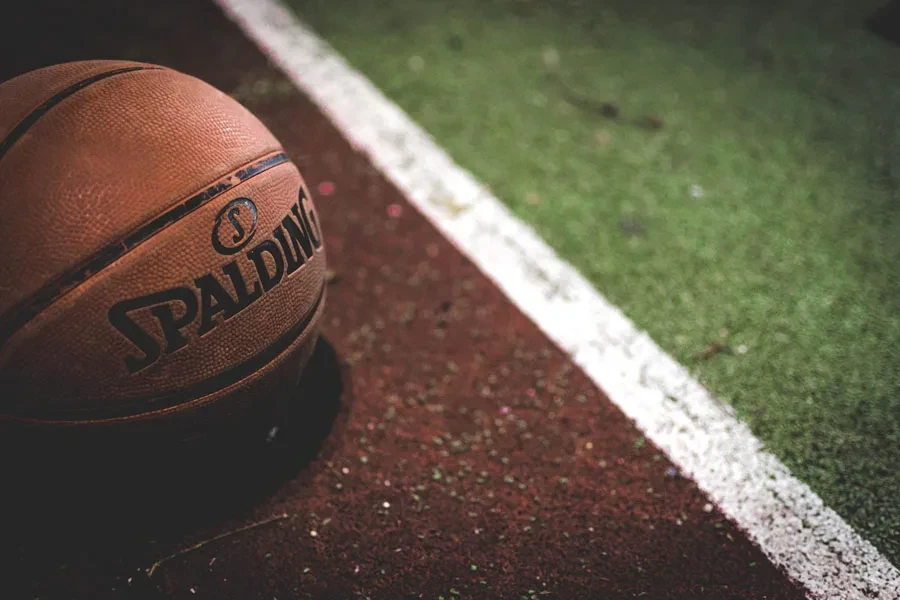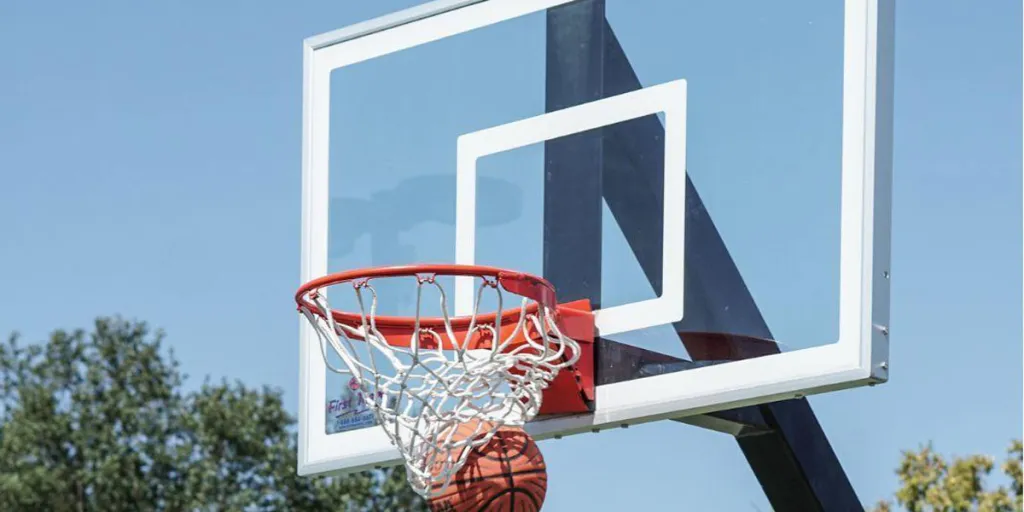Basketball is a game of speed, fluid movements, and precision, which makes the ball choice crucial for success. Ideally, the right ball influences the trajectory of shots, how players control passes and their general performance. The connection between the player and the ball is, in fact, what defines the very essence of basketball as a sport.
Sellers and retailers should pay attention and understand this connection between performance and the type of ball. This knowledge will help them to tailor their inventories to reflect the preferences of different players.
This guide will give you insights into choosing the right ball for a range of player’s preferences, ensuring your products align well with what every player wants.
Table of Contents
Overview of the basketball market
Types of basketballs
Essential factors to consider when selecting basketballs
Conclusion
Overview of the basketball market

The basketball market has experienced significant growth in recent years. In 2022, it was valued at US$ 900.55 million, and it is projected to continue to grow at a compound annual growth rate (CAGR) of 5.9%, reaching a remarkable value of US$ 1,424.54 million by the end of 2030.
This market trajectory can be attributed to two factors. First is the game’s growing popularity among teenagers, not only in the US but also globally. This is evident as schools are setting up basketball courts and organizing competitive leagues as part of co-curricular activities. Consequently, this growing popularity increases the demand for high-quality and diverse basketball options.
The second factor behind the expanding basketball market is the rise in urbanization. The already established recreational facilities in urban areas attract people seeking active lifestyles, which has increased the demand for basketballs.
Types of basketballs
Rubber basketballs

Rubber basketballs are made of natural rubber that gives them a rough surface texture. The rough texture allows for a solid grip in fast-paced basketball matches. These balls are quite affordable, making them popular in schools and community centers.
Google Ads data shows that the average monthly searches for rubber basketballs in the past year increased by 7.92% globally. This established and growing popularity guarantees a consistent and reliable customer base for businesses.
Synthetic basketballs

Synthetic basketballs are made of synthetic or composite leather. Unlike genuine leather, this material is more cost-effective, making these basketballs popular among people on tight budgets. In addition, the balls are adaptable to various settings, including hardwood indoor floors and rugged asphalt outdoor environments.
Sellers looking to diversify their businesses can take advantage of the growing popularity of synthetic basketballs. According to Google Ads, their average monthly searches in the past year increased by 7.67%. Stocking them puts your business in a position to capitalize on an expanding customer base.
Leather basketballs

Leather basketballs are the most popular among the three types of basketballs. These balls are made of pure leather for durability and quality performance. They feature a rough texture for a solid grip and improved precision when taking shots. They are popular among professional players, including those in the NBA and WNBA.
Stocking leather basketballs can be ideal for sellers looking to diversify their businesses. Their popularity is undeniable, as their average monthly searches in the past year increased by 7.25%, according to Google Ads’ data. Having them on your shelves allows you to cater to a diverse audience, including professionals looking for the ultimate playing experience.
Essential factors to consider when choosing basketballs

Type
The ideal basketball type is often determined by its purpose, audience, and performance characteristics. For instance, leather basketballs are popular among professional players due to their premium construction and unique feel. On the other hand, synthetic and rubber basketballs target a broader audience thanks to their affordability.
When stocking basketballs, it’s important to understand your audience to ensure you have an option that caters to every user’s needs.
Size and age group
Basketballs come in various sizes. Before stocking, you must understand how the size impacts the playing experience for individuals of different age groups.
Children and pre-teens will benefit more from smaller basketballs compared to teens and adults. Basically, as the age progresses, so does the size of the basketball.
Quality and durability
Each ball’s quality and durability should be a top consideration when building your inventory. Consider reputable brands with a proven track record of producing high-quality and durable products. Customers will always prefer products that not only meet performance expectations but also stand the test of time.
Budget
Budget is another crucial consideration. Ideally, some users, especially professional players, may be willing to spend more on high-end, premium basketballs. On the other hand, beginners and non-league players will mostly go for affordable, budget-friendly options. When stocking, offer a wide range of options for each of these diverse buyers.
Performance features
Several factors determine the performance of a basketball. For instance, a good grip helps players maintain control during dribbles, passes, and shots. The best options to stock are those with textured surfaces or innovative grip technologies.
In addition, consider the bounce of the basketball. Players will go for a ball whose bounce is predictable and consistent for accurate ball control.
Eco-friendly considerations
The growing environmental awareness campaign has influenced consumer preferences. Sellers should consider including eco-friendly basketball options in their inventories to keep up with this shift. These balls are either made of sustainable materials or manufactured using eco-friendly processes.
Conclusion
Different players have unique preferences when choosing basketballs. Some will prefer balls made of pure leather, while others opt for the versatility of synthetic or rubber balls. Whichever the case, the choice will determine the player’s performance on the court.
As a seller, aim to accommodate this diversity by offering a diverse selection of basketballs. For the price ranges, consider catering to both budget-conscious buyers and those willing to invest in premium performance. The goal is to create a comprehensive inventory that meets every player’s needs.
You can check out Chovm.com to not only keep tabs on different types of basketball trends but also access quality balls you can stock.





 বাংলা
বাংলা Nederlands
Nederlands English
English Français
Français Deutsch
Deutsch हिन्दी
हिन्दी Bahasa Indonesia
Bahasa Indonesia Italiano
Italiano 日本語
日本語 한국어
한국어 Bahasa Melayu
Bahasa Melayu മലയാളം
മലയാളം پښتو
پښتو فارسی
فارسی Polski
Polski Português
Português Русский
Русский Español
Español Kiswahili
Kiswahili ไทย
ไทย Türkçe
Türkçe اردو
اردو Tiếng Việt
Tiếng Việt isiXhosa
isiXhosa Zulu
Zulu